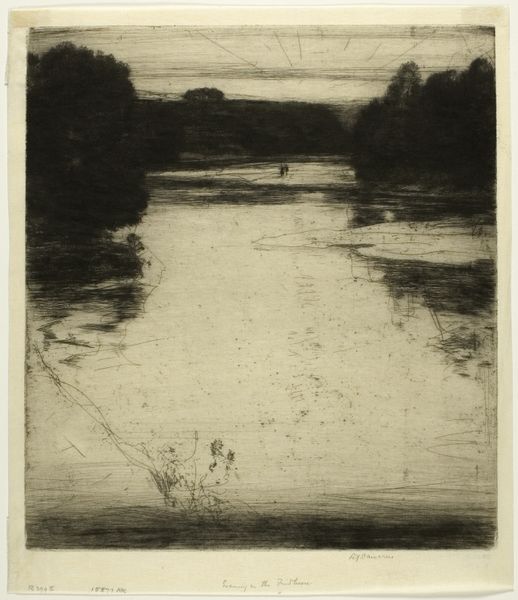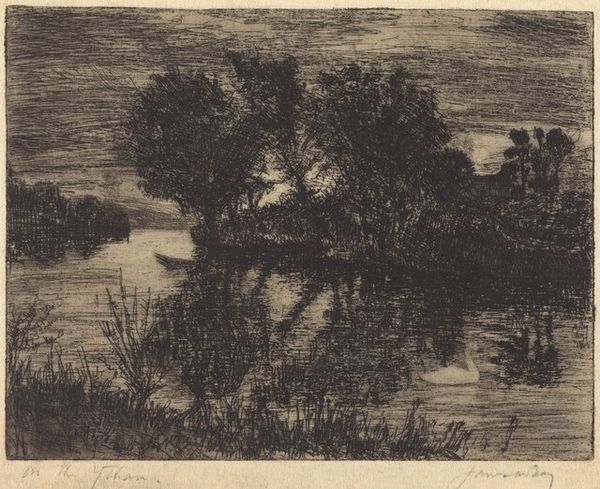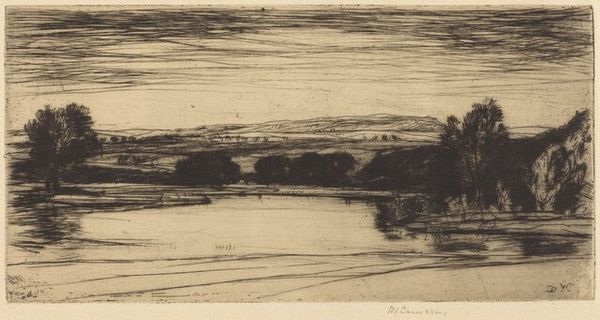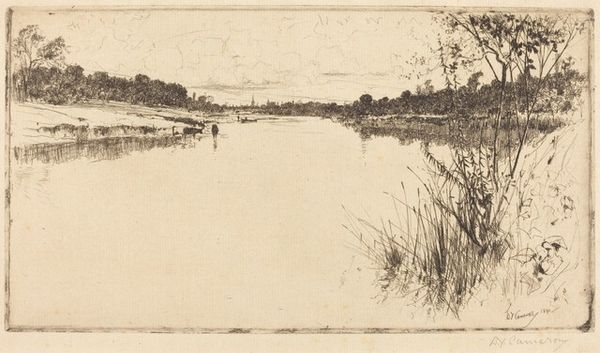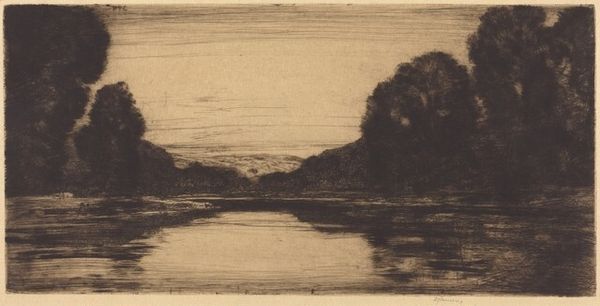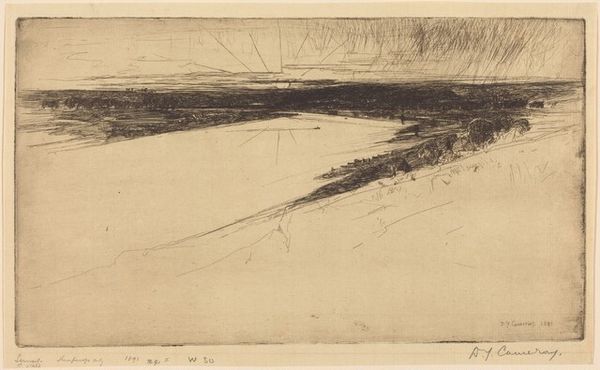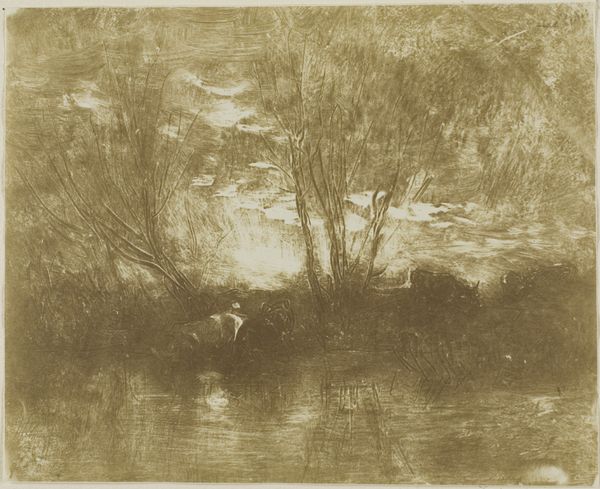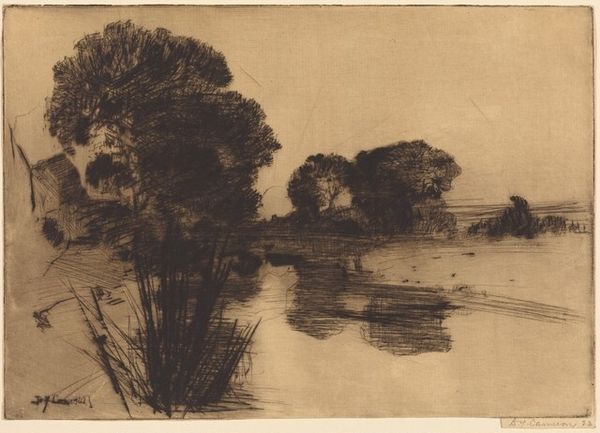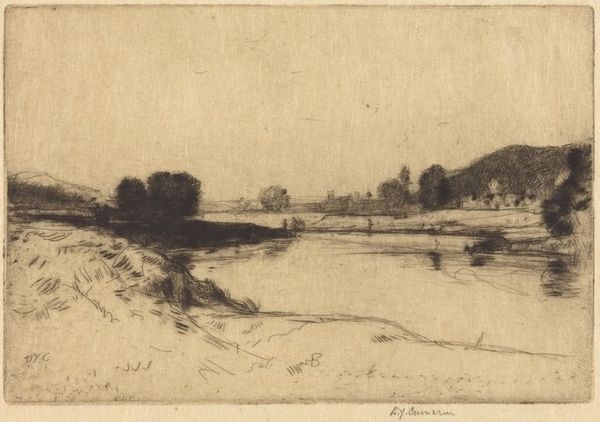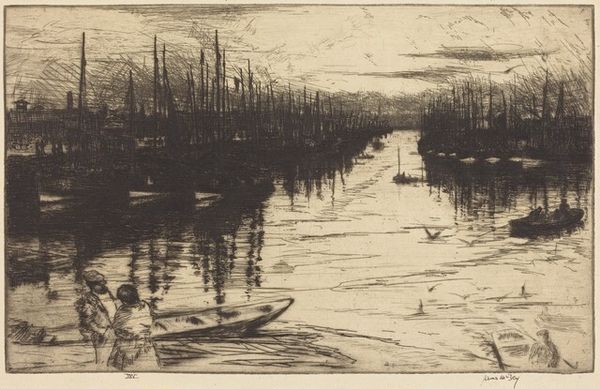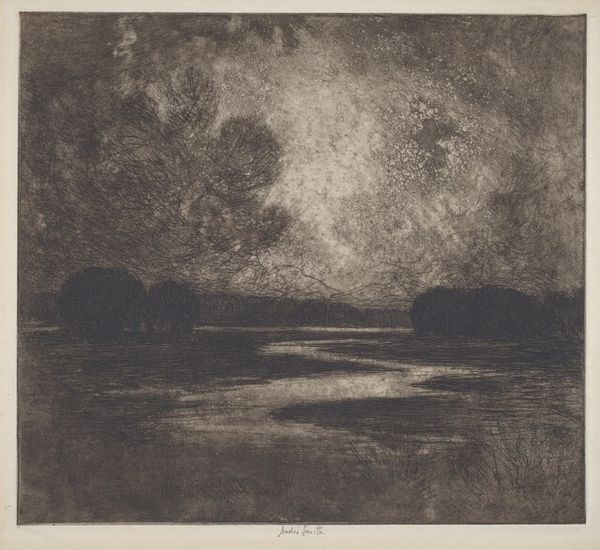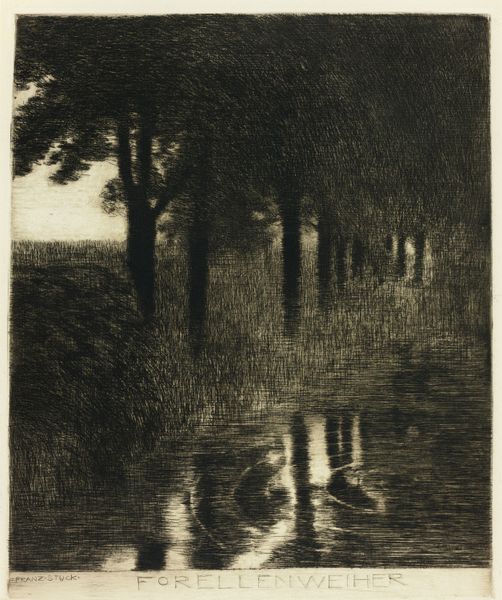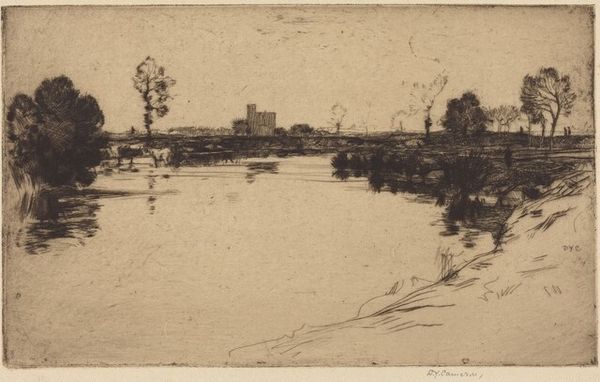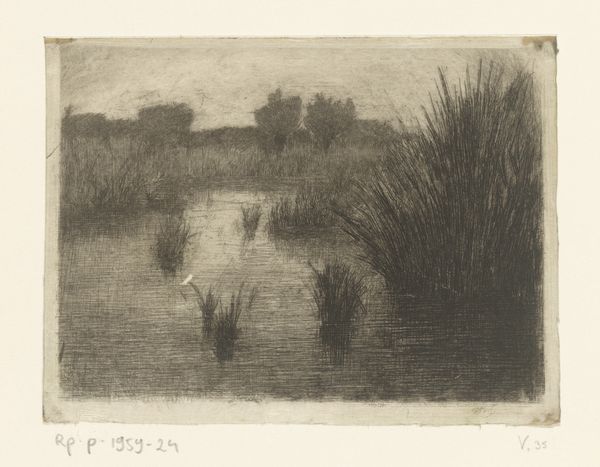
Copyright: National Gallery of Art: CC0 1.0
Editor: This is "Evening on the Garry," an etching created by David Young Cameron in 1906. It's so subtle and subdued, but also incredibly detailed. I am struck by the process. What does the materiality tell us about this piece? Curator: It's crucial to consider the etching process itself. Look at the lines - the varying depth suggests different biting times in the acid bath. The labor-intensive nature of etching in the 1900s made printmaking more accessible, opening it up beyond painting and sculpture which previously was a sign of wealth and privilege. Does this impact how you view it? Editor: That’s fascinating! So, the print medium itself challenged established hierarchies. How does the setting, the landscape itself, factor into this reading? Curator: Well, Cameron’s choice to depict the “Garry” speaks volumes. Was this an area undergoing industrial development, perhaps? The landscape genre becomes a site of negotiation – reflecting on progress but also potential loss as industries altered traditional views and practices. The etching method allows many prints and dissemination - where are they circulated and to what public? How does Cameron present the worker(s) near the center of this Garry to reflect that shift? Editor: The lone figure, almost dwarfed by the landscape, adds to that feeling. Knowing this could speak to the social transformations, the shift towards mass production makes me appreciate the artist's skill. I originally focused on its aesthetic quality, but the cultural context makes it even richer. Curator: Exactly. We often forget that art is work and production is cultural. Appreciating the relationship of labor, materials, and environment helps us question value—then and now. Editor: I’ll definitely be paying more attention to those relationships in future artworks. Thanks!
Comments
No comments
Be the first to comment and join the conversation on the ultimate creative platform.
